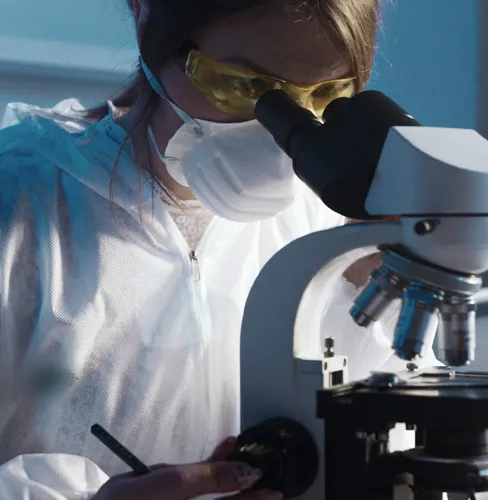What is Human Gene Transfer?
Human Gene Transfer (HGT) is used to describe research involving the transfer of recombinant DNA, or DNA or RNA derived from recombinant DNA, into human subjects. It is also sometimes referred to as “Gene Therapy.” Researchers at Ohio State are currently using HGT for a variety of human diseases to see whether it can treat certain health problems by supplying a missing protein, compensating for a defective gene, providing a therapeutic substance, or activating the subject’s own immune response.
Regulatory Guidelines
HGT touches on a number of scientific, medical, ethical, and safety issues. The National Institutes of Health (NIH) Office of Science Policy (OSP), the office charged with oversight of recombinant DNA research and maintains the NIH Guidelines for Research Involving Recombinant or Synthetic Nucleic Acid Molecules (NIH Guidelines). The NIH Guidelines set forth the principles for oversight and provide guidance on the conduct of HGT to ensure the safe handling and containment of recombinant DNA. The guidelines define human gene transfer as the deliberate transfer into human research participants of either:
- Recombinant nucleic acid molecules, or DNA or RNA derived from recombinant nucleic acid molecules, or
- Synthetic nucleic acid molecules, or DNA or RNA derived from synthetic nucleic acid molecules, that meet any one of the following criteria:
- Contain more than 100 nucleotides; or
- Possess biological properties that enable integration into the genome (e.g., cis elements involved in integration); or
- Have the potential to replicate in a cell; or
- Can be translated or transcribed.
The NIH Guidelines were recently updated and streamlined to eliminate the Recombinant DNA Advisory Committee (RAC) and remove the requirement to register and report human gene therapy protocols to the NIH OSP, thereby granting full authority to local oversight bodies (e.g. Institutional Biosafety Committee (IBC) and Institutional Review Board (IRB)) to determine whether the research presents significant biosafety, scientific, societal, or ethical concerns.

Review and Approval Process
Human gene transfer research at Ohio State must undergo Institutional Biosafety Committee (IBC) review and approval process. To initiate this process, investigators must register their HGT research with the IBC.
Additional Information
For general information on human gene transfer clinical trial research and the institutional review process contact.